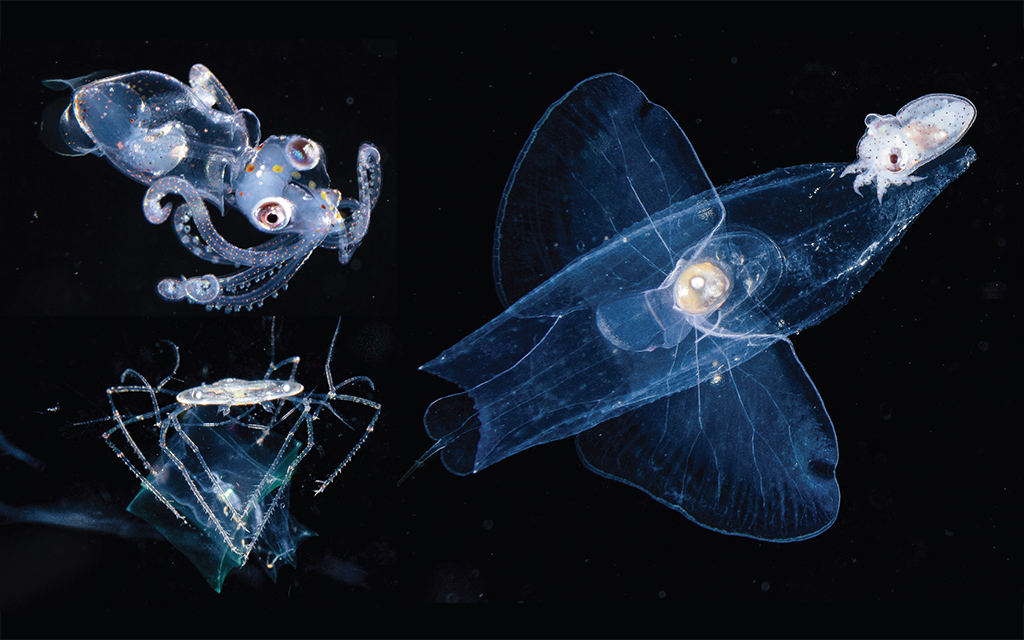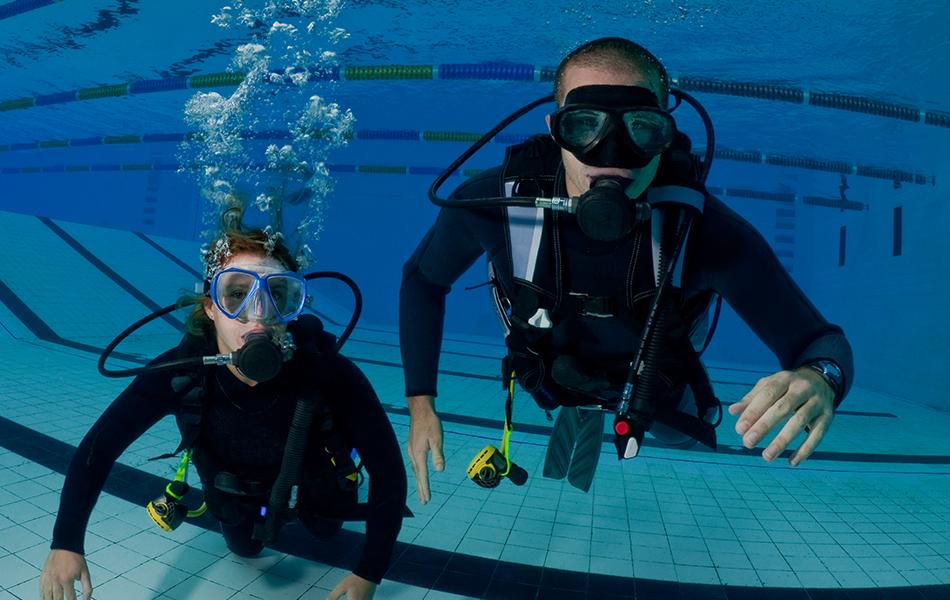
Clockwise from top left: Enope squid, Argonaut on a sea angel, Lobster on hydromedusa
Kirsty Andrews ventures to inner space, photographing the vertical migration of planktonic drifters.
It’s been somewhat of a theme of my columns that scuba diving is a broad church; a discipline with many different enjoyable facets so that there is something for everyone. One of the strands of diving fun that is slightly more difficult to explain to the layman than others, is black water diving. Even the name is dark and mysterious.
When my work colleagues wish me a happy holiday I smile and say thank you. They already know I’m a diver and that my trip will be more focussed, salty and active than most. If I go further and explain that I’m mostly looking forward to leaving my hotel room at night, taking a boat to somewhere offshore above a deep ocean trench, and swimming about midwater in the dark looking for animals that are often so small I can barely make them out with the naked eye, then I really get bemused looks.
Black water diving is almost cultish in that those who are into it tend to be really into it. On your first black water dive you may get the bug immediately, stunned into fascination by a passing incredible larval octopus or frond-laden fish. Or you may spend 60 minutes wondering what on earth is going on, flailing around in the darkness, haplessly staring at white particles in the water and hoping that they have eyes, and regretting your life choices. Bewildered when you surface and others are raving about a brief encounter with a minuscule wondrous animal in the deep. The truth is somewhere in between; there is an awful lot of searching fruitlessly, with the occasional frenzy of excitement that makes it all worthwhile.
[black water diving is done] at night, taking a boat to somewhere offshore above a deep ocean trench, and swimming about midwater in the dark looking for animals that are often so small I can barely make them out with the naked eye
On the happy occasion that you do surface gleefully with an image or two of a precious tiny critter on your camera, then the fun is not over. What on earth is it? Some animals are well known and lauded, such as the paper nautilus, the diamond squid, the blanket octopus. Others are less glamorous but nonetheless of interest, like the phronima, a tiny crustacean which by the look of it inspired the Alien film franchise.
I have a fondness for tiny translucent beings whose pulsing movement in the water, natural symmetry and mysterious range of shapes draws my eye - they’re not the superstars of black water but they are part of the wondrous picture. I also love spotting an intra-species relationship, animals who cooperate or make use of each other for some reason, in this empty space-like universe. Larval lobsters grab hold of jellyfish, both to propel them through the water and to defend themselves with the borrowed stinging tentacles. Tiny octopuses hitch a ride on passing salp chains or other animals such as sea angels.
The tiny, tiny (and I do mean tiny) larval fish are tantalising: they often bear very little relation to their adult forms, settled on the reef. In their young form they may be translucent or have flowing appendages to confuse predators, which later fall off as they transform. Black water aficionados have been doing serious research for many years now, so some of your finds can be identified from books, or from experts on social media groups. Or, in this landscape where we understand only a small fraction of what’s in the vast ocean, there is a real possibility that your spot may be new to science, a never-before-spotted juvenile form or deep-water creature. What a thrill.
Article ‘The cult of black water’ by Kirsty Andrews first published in SCUBA magazine, Issue 155 May 2025.

 Author: Kirsty Andrews | Posted 19 May 2025
Author: Kirsty Andrews | Posted 19 May 2025



